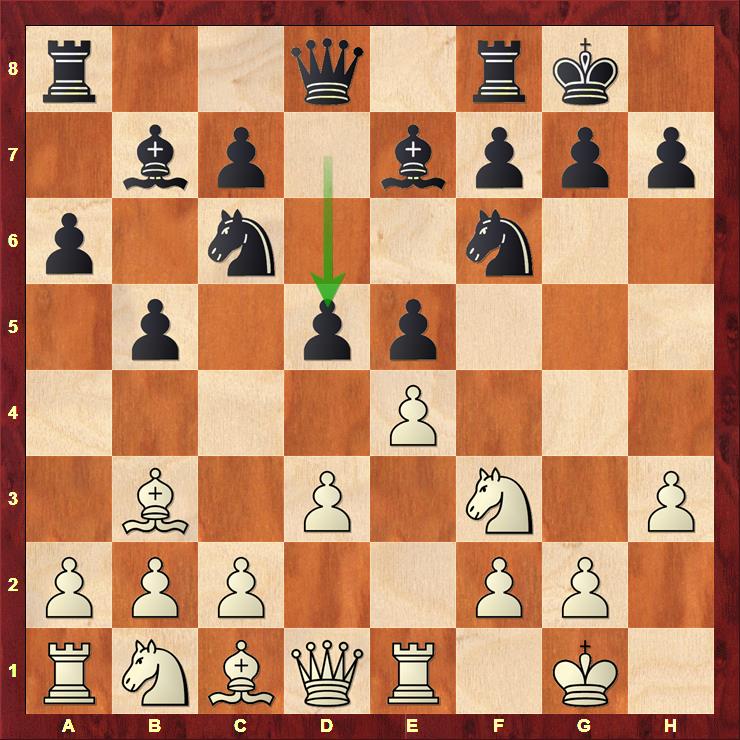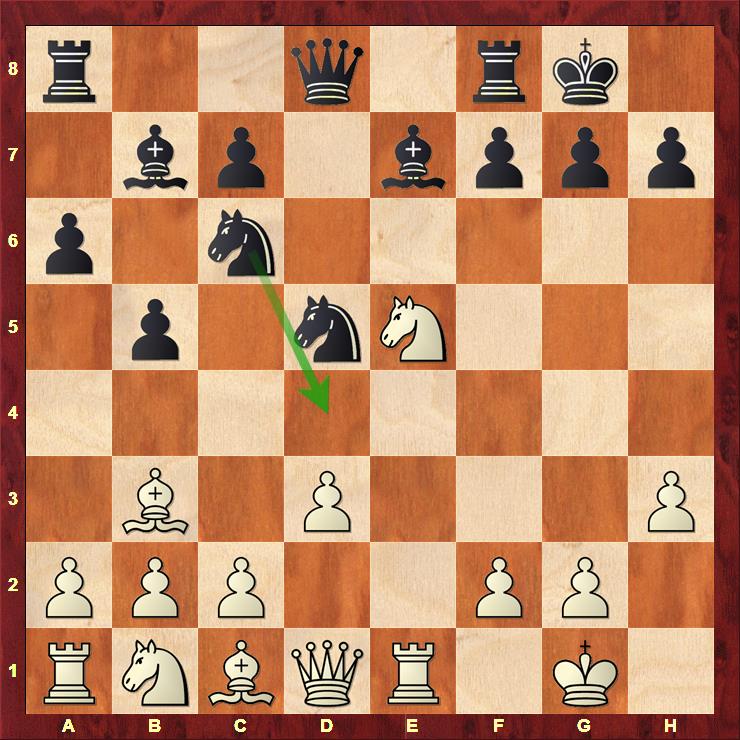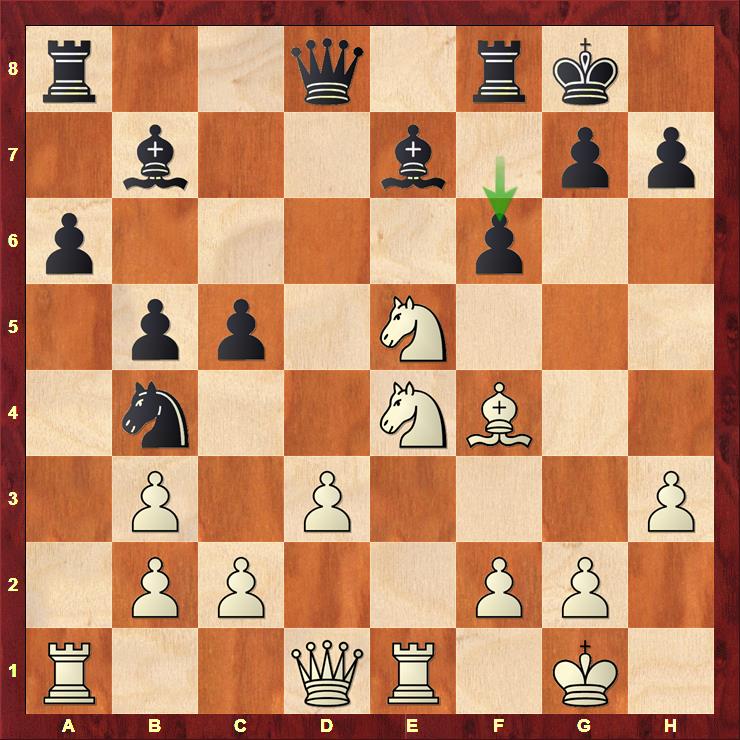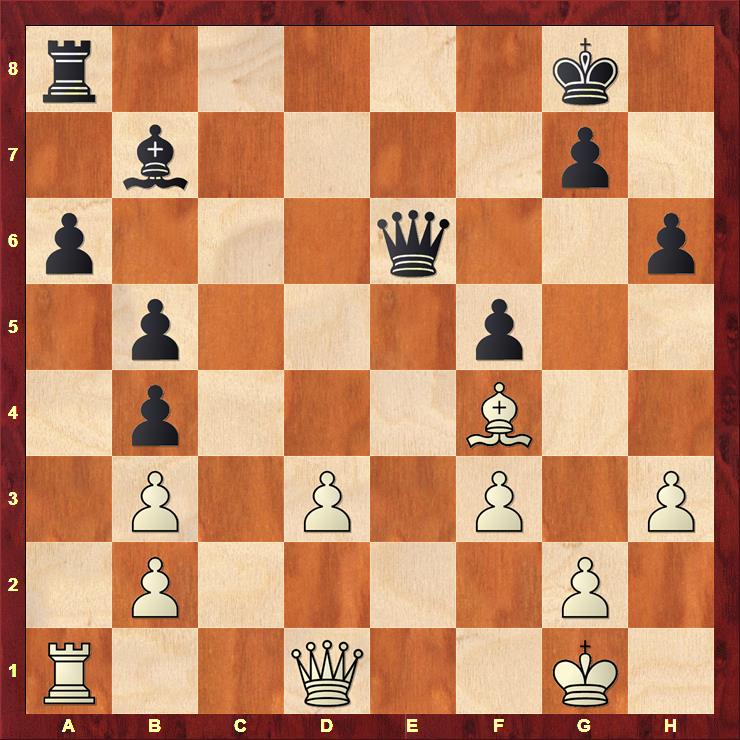FWCM 06: A heavy theoretical battle
Magnus Carlsen has been pretty much out of sorts in this World Championship Match. He botched up two winning positions in game three and four, and in the fifth game he was nearly lost. However, in the sixth round he played some accurate chess and made use of his excellent preparation to make an easy draw against the Challenger with the black pieces. GM Tiger Hillarp Persson analyzes this short but exciting game.
Photos by Albert Silver
FWCM 06: Magnus' impeccable preparation

After having a wobbly fifth round, Magnus Carlsen was back in form with a solid sixth round performance. Karjakin's white repertoire is pretty narrow and Magnus was able to make some in-depth preparation and draw the game with ease.

9...d5!? is not as aggressive as the Marshall Gambit, but Black has excellent compensation in the form of centralized pieces and the double bishop advantage.

The move made by Magnus here was ...Nd4! trying to win the b3 bishop, and not Nxe5 as in the Marshall.

...f6 followed by ...f5 by Carlsen was a forcing line that left Sergey with very little chance to deviate.

Black recovered the pawn, but thanks to the opposite coloured bishop scenario, the game ended in a draw.

GM Tiger Hillarp Persson, one of the most exciting chess players and author has annotated the game for ChessBase. Check out his very interesting commentary.
[Site "New York"]
[Date "2016.11.18"]
[Round "?"]
[White "Karjakin, Sergey"]
[Black "Carlsen, Magnus"]
[Result "1/2-1/2"]
[ECO "C88"]
[WhiteElo "2772"]
[BlackElo "2853"]
[Annotator "Tiger Hillarp Persson"]
[PlyCount "64"]
[EventDate "2016.??.??"]
player, trying to find assymetry where I can find it. Magnus and Sergey
operate from a more elevated view-point than mine, and although they both
occasionaly flirt with assymmetry, I do not get the feeling that they believe
it merits a proper relationship.} 2. Nf3 Nc6 3. Bb5 ({In a sense the Ruy Lopez
is a little more ambitious than the G-whatever Piano (In Swedish we call it
"the Italian", so I'm excused for not acing the spelling bee). If we continue
down the rabbit hole with} 3. Bc4 Bc5 4. O-O Nf6 5. d3 O-O {, there is a big
difference between... this position, compared to the more easily spelled
sibling; that Black has still not moved the pawns on the queenside. This
difference means that Black has fewer weaknesses to take care of and it could
turn out to be the whole difference between a win and a big advantage (for
White) later in the game.}) 3... a6 ({I believe it was Julian Hodgson who said
that the only problem with 1.e4, compared to 1.d4, is that the e4-pawn is
hanging. After} 3... Nf6 4. O-O Nxe4 {we reach one such position, the Berlin
Defence. (The Petroff is another)} 5. Re1 Nd6 6. Nxe5 Be7 7. Bf1 Nxe5 8. Rxe5
O-O {was seen in game three of the match. Black argues that a reasonably
symmetrical position makes White's extra tempo less important. Time has told
it is a decent argument.}) 4. Ba4 Nf6 5. O-O Be7 6. Re1 (6. d3 b5 7. Bb3 d6 8.
a3 {was played in the second game of the match. The main difference here is
that Black can play d6 before 0-0 with having to fear a rapid c3/d4, which
would lead to the one of the old main lines.} (8. a4 {is also played
frequently, but after} Bd7 {has been doing quite well lately.})) 6... b5 7. Bb3
O-O {It sounds ridiculous to call such a move "critical", but in a sense it is.
} ({The reason is that} 7... d6 8. c3 O-O 9. h3 {leads to a one of the biggest
theoretical tablelands in chess, whereas the game move avoids that altogether
by meeting 8.c3 with 8...d5. In days of old, this line, the "Marshall Attack",
led to sluggerfest bonanzas, but in the age of engine-guided preparations it
has a tendency to end in draws. This explains why a defensively minded wielder
of the dark forces is naturally drawn to the Marshall Attack.}) 8. h3 {The
consequences of Karjakin's last move is that White is forced to play this move,
unless he is happy to enter the "old" lines after 8...d6 9.c3.} (8. a4 {After}
Bb7 9. d3 Re8 (9... d6 {is more popular.}) 10. Nc3 Nd4 11. axb5 Nxb3 12. cxb3
axb5 13. Rxa8 Bxa8 14. Nxb5 d5 {, Black equalized with ease, in Dominguez
Perez,L (2730)-Carlsen,M (2850) World Rapid 2015.}) (8. c3 d5 9. exd5 Nxd5 10.
Nxe5 Nxe5 11. Rxe5 c6 {is the starting position of the above mentioned
Marshall Attack. I'm too old to try to get familiar with it. Perhaps I would,
if jailed by nazis and left with only a monograph (written by Peter Svidler)
to fend for my sanity, eventually be able to say something sensible about this
position. And although the likelyhood of this scenario has increased lately,
I'm afraid that you'll have to wait until some time next year, at least.
(Seeing the draw looming twenty moves ahead, you'll have to excuse me for
trying to pump up the drama a bit.)}) 8... Bb7 {The most natural move if Black
wants to avoid} 9. d3 (9. c3 $6 d5 $1 {is nice for Black. It is not
recommended to play} 10. exd5 Nxd5 11. Nxe5 $2 (11. d4) 11... Nxe5 12. Rxe5 Nf4
{, when catastrophy strikes the white camp. Reading about the unredeemed
expectations of some kibitzers, I get the feeling that they expect something
like this, and nothing less. Sorry guys. You should stick with risk.}) 9... d5
$5 {This Marshall Attack-inspired gambit can hardly have come as a surprise
for Karjakin, partly because it is a main line and partly because it is played
to draw. Especially the latter reason should have appealed to Magnus after
yesterdays rather wobbly performance.} ({In a rapid game against Zhigalko last
year, Magnus played} 9... d6 10. a3 Nb8 11. Nbd2 Nbd7 12. Nf1 Re8 13. Ng3 Bf8
14. Ng5 d5 15. exd5 Nc5 16. c4 {and had to fight to equalize.}) 10. exd5 Nxd5
11. Nxe5 ({None of the players has room to deviate. Here} 11. a4 Nd4 $1 {
equalizes immediately.}) 11... Nd4 $1 {Compared to the Marshall Attack, Black
doesn't have as much of an attack here. The compensation is a more positional
character. While the bishop on b7 roams freely, Black's queenside pawns
doesn't have to worry about a2-a4 (since Nxb3 would completely ruin White's
pawn structure) and c7-c5 will take a lot of space. From a White perspective,
the c2-pawn has to be taken care of and the knight on e5 turns out to be in a
rather awkward position...} 12. Nc3 Nb4 ({An instructive illustration of my
last comment about the knight on e5:} 12... Nxb3 13. axb3 Nb4 14. Bd2 f6 $1 15.
Ng4 f5 $1 {The pawn is accelerated forward as it attacks the knight.} 16. Ne5
Bd6 17. Na2 Bxe5 18. Rxe5 Nc6 19. Re1 f4 20. Bc3 $6 ({Black also has a strong
attack after} 20. f3 Nd4 21. Rf1 Rf6) 20... f3 21. Re4 a5 $5 22. b4 {and now,
instead of} axb4 {which was unclear, in Timofeev,A (2658)-Sokolov,I (2655)
Sarajevo 2007, Black should have played} (22... Ne7 $1 {, with a very strong
attack.})) 13. Bf4 {Perhaps there is nothing better here, but this move
doesn't feel right to me. Why? There is something about putting the bishop in
the line of fire (g5/Nd5) and striving to tuck it in on h2, that rings false.
I'd prefer to put it on c3. On the other hand the bishop is not obstructing
the queen and could come to e5. After weighing the pros and cons, I must
disagree with my first instinct. It does indeed make sense.} ({I'd probably
spend some time on} 13. Bd2 {according to the principle "less is more" (and
"don't put the bishop on square where it is likely to be attacked").}) (13. Ne4
{has been played a number of times and the lines after} Nxb3 14. axb3 Qd5 15.
Nf3 f5 {seem to hold no danger to Black.}) 13... Nxb3 14. axb3 c5 15. Ne4 {
Karjakin is trying to prove that the inclusion of Bf4 and c5 somehow favours
White.} f6 $1 {According to the reports I read, Carlsen continued to blitz out
the moves even now, so it's pretty clear that this was all part of his
preparations.} 16. Nf3 f5 $1 {A recurring idea leaving White with little
choice.} 17. Neg5 $1 (17. Ng3 Bxf3 $1 {and it becomes obvious why the attack
on the c2-pawn is a problem for White:} 18. gxf3 (18. Qxf3 Nxc2 $19) 18... Bf6
$36) (17. Ned2 {is the most ambitious move, since it keeps some pieces on the
board. After} Bf6 18. Be5 Re8 19. Rc1 h6 20. Re2 {What else?} Bxe5 21. Nxe5 Nd5
{White cannot let the knight land on f4 and} 22. g3 f4 {gives Black a nasty
initiative. So, it seems that the most ambitious move was less than good.})
17... Bxg5 18. Nxg5 h6 $1 19. Ne6 Qd5 20. f3 Rfe8 {The last five moves have
basically been forced, but now White has two alternatives; one human and one
non human.} 21. Re5 (21. Nc7 Qd4+ 22. Kh1 Rxe1+ 23. Qxe1 Qxf4 24. Nxa8 Nxc2 {
looks like absolute disaster for White from afar, but in fact White can get a
draw in more than one way. One pretty line is} 25. Qe8+ Kh7 26. Nb6 $3 Nxa1 27.
Nd7 {and Black has no defence against the Nf8/ Nd7-pendulum.}) 21... Qd6 22. c3
{The challenger goes for the draw in the most solid manner.} ({The more
complicated} 22. Re2 {also ends up in equlity after} Qd7 23. Nc7 (23. Nxc5 $2
Qd4+) 23... Rxe2 24. Qxe2 Rc8 25. Re1 Qd4+ 26. Qe3 Nxc2 27. Qxd4 Nxd4 28. Re7 {
Alas, how forced!} Nc6 29. Rd7 Rd8 30. Rxd8+ Nxd8 31. Bd6 Kf7 32. Bxc5 Ne6 33.
Nxe6 Kxe6 {is a most drawish draw.}) 22... Rxe6 23. Rxe6 Qxe6 24. cxb4 cxb4 {
If White was allowed to play d4, Be5 and then put the queen or rook in such a
place from where it would keep an eye on g7; then White would be better.} 25.
Rc1 Rc8 {But Carlsen will not let White have three moves for free.} 26. Rxc8+
Qxc8 27. Qe1 Qd7 28. Kh2 a5 29. Qe3 Bd5 30. Qb6 Bxb3 31. Qxa5 Qxd3 32. Qxb4 Be6
{Next Black will put the queen on d7 and the position will reach a state of
zero entropy. So, draw agreed.} 1/2-1/2


Without a doubt the best moment in the match so far! #CarlsenKarjakin #Helicopter pic.twitter.com/WphlHbTGQm
— Erwin l'Ami (@erwinlami) November 19, 2016

Related:
- FWCM 2016 03: A lively Berlin Endgame!
- FWCM 2016 02: Carlsen's mysterious rook moves
- FWCM 2016 01: Carlsen's benign Trumpowsky!
- FWCM 2016: Press Conference and Opening Ceremony
- FWCM 2016: A perfect draw!
